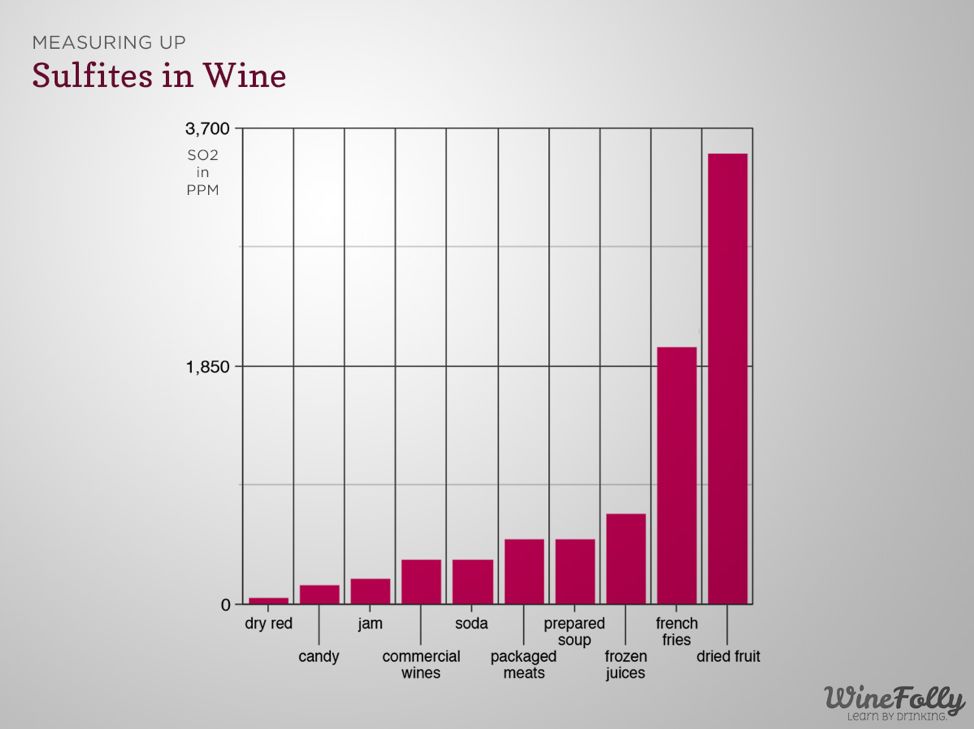Wine 101: What You Need to Know About Sulfites

Image: Shutterstock
Reading the back of a wine bottle, you will see the government’s warning message about not consuming wine while pregnant. Another two words—“contains sulfites”—also appear. Is this a warning? Perhaps, perhaps not. Sulfites are found in most wines and have attracted much attention, resulting in several myths.
Basically, sulfites are a form of sulfur dioxide (SO2). They are primarily added to the juice of crushed grapes to forestall any unwanted bacterial fermentation prior to adding a yeast to change the juice to wine. Occasionally they are added to wine after fermentation to ensure stability and to prevent a second fermentation in sweet wines. Sulfites are higher in white wine and often in what are referred to as “commercial” wines. (Those are the large bottles usually found on the bottom shelf of the store.)

Image: Wine Folly
The first myth is that sulfites cause an allergic reaction. While this may be true for the 1 percent of the population who has a sulfite allergy, particularly asthmatics, it could also be caused by foods consumed during or prior to wine consumption. It has been said that more sulfites are found in a salad bar than in a bottle of wine.
The second myth is that sulfites in wine cause headaches. That is not likely. Rather, headaches from wine usually arise from overindulgence (hangover) or a reaction to histamine or tannin in the wine. The "typical allergic reaction to sulfites is hives, itching, flushing, swelling, nausea, diarrhea and low blood pressure," says Dr. Mary C. Tobin, director of the Division of Allergy and Immunology at Rush University Medical Center, in a Chicago Tribune article. These reactions are bad, but they are not a headache. A solution to prevent a headache may be to consider a white wine, which is lower in histamine and tannin, products arising from longer grape skin contact after grape crushing. If you must have a red wine, some believe that Chianti drinkers suffer fewer headaches. Also, the product Drop It is a liquid that supposedly reduces sulfites.
The third myth is that sulfites are not natural. Whether or not they are added, sulfites are a natural byproduct of the winemaking process. They have been used since Roman times to stabilize wine and prevent its oxidation. The wording “contains sulfites” was added to the back label of wines in 1988 ostensibly to inform consumers.
Current winemaking techniques and healthier grapes have reduced the amount of sulfites added to the crushed grapes. If sulfites remain a concern, consider “natural” wines, which are readily available, and do not add sulfites. To put this in perspective, a writer once stated that he gets a headache reading the warning label.
Bob can be contacted at gulfcoastwinejournal.com